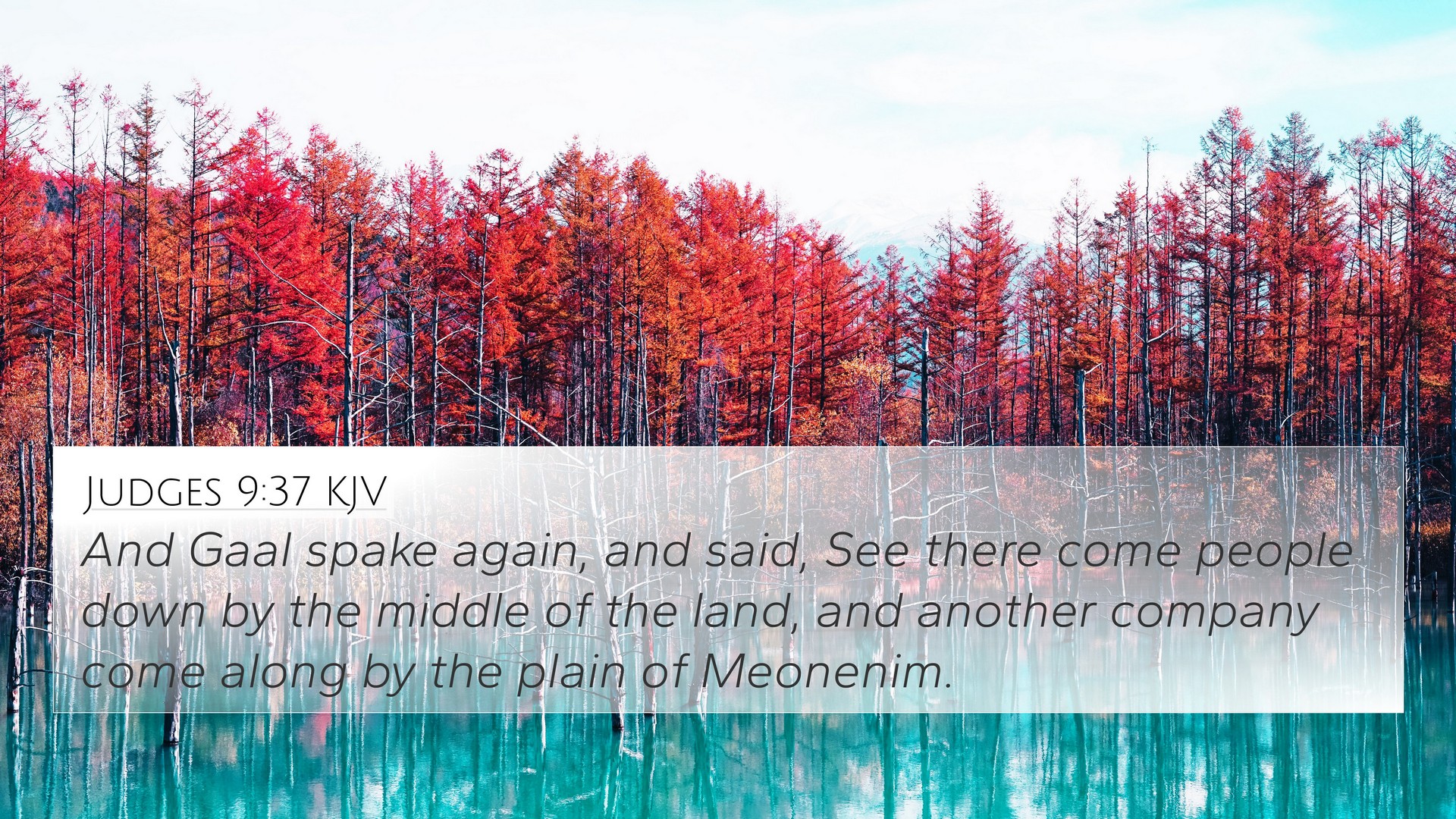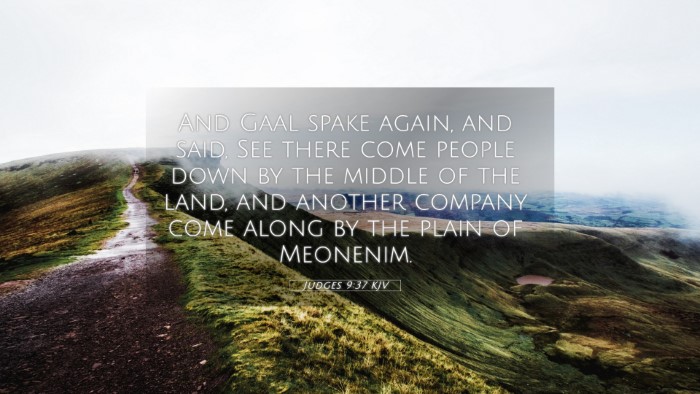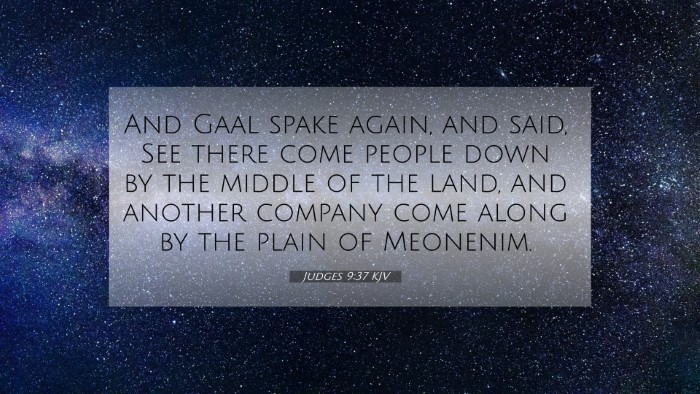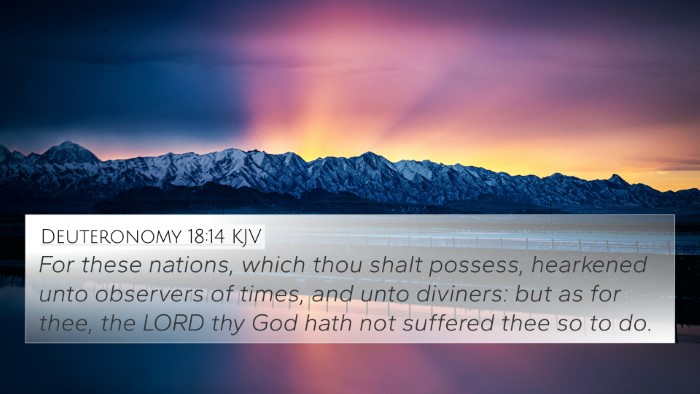Understanding Judges 9:37
Judges 9:37 states, "And Gaal spake again and said,
'See there come the people down by the middle of the land,
and one company doth come by the way of the oak of Meonenim.'"
This verse takes place in the context of Gaal's observation
of the approaching forces, hinting at the military strategy
and the tensions present in the narrative of Abimelech’s
rise to power and the ensuing conflict.
Commentary Insights
The commentary from Matthew Henry elaborates on the
implications of Gaal's words, emphasizing the fear
that permeates the hearts of the people in Shechem.
Gaal's commentary signals a turning point where leaders
need to be cautious as circumstances change rapidly.
He draws attention to the details of strategy and
the environment, indicative of the heightened suspense
in this period of conflict.
Adam Clarke adds depth by explaining the significance
of the 'oak of Meonenim' as a notable landmark that
may have served as a meeting point or a strategic
location for ambushes during this tumultuous period.
Clarke leads us to consider the geographical context,
showing how terrain and landscape play pivotal roles
in battles in Biblical narratives.
Albert Barnes emphasizes Gaal's growing confidence
and the courage to confront his opposition,
hinting at the eventual clash that arises from
such bold proclamations. Barnes describes how
Gaal's remarks indicate a key shift in the dynamics
among the leaders of Shechem, potentially indicating
unrest or a rallying cry that can lead to rebellion
against Abimelech.
Cross-References
Judges 9:37 has several pertinent cross-references
within the Scripture that illuminate its meaning:
- Judges 8:3 - Reference to Gideon's leadership and strategy.
- Judges 9:25 - Illustrates the opposition against Abimelech.
- Genesis 12:6 - Significance of landmarks in Biblical narratives.
- 1 Samuel 11:5 - Example of seeing signs of distress or approaching armies.
- 2 Samuel 10:9 - Strategic military positioning in battle.
- 1 Kings 20:20 - The importance of intelligence on opposing forces.
- Isaiah 47:12 - The role of fortifications and environments in conflict.
- Matthew 24:6 - Reference to understanding signs, akin to military observations.
- Mark 14:43 - Approach of adversaries parallels themes in Judges.
- Revelation 16:14 - Gathering of forces referencing conflict and chaos.
Thematic Connections
The themes in Judges 9:37 resonate with broader
Biblical narratives concerning leadership,
the consequences of ambition, and the need for
vigilance against enemies. Such discussions can
be enhanced through effective cross-referencing
of scripture.
When exploring Bible verses that relate to each other,
tools for Bible cross-referencing, such as concordances
and study guides, could be instrumental in providing
deeper biblical insights into themes of conflict and
governance—both historically and spiritually.
Connecting Themes
By identifying the connections between Old and New Testaments,
we see recurring motifs of observation leading to action, as
observed in both Gaal's declaration and the teachings
of the New Testament concerning discernment in discernment
(e.g., Matthew 16:3).
Having a comprehensive Bible cross-reference material,
one can delve into similar narratives found in 1 Samuel,
where the establishment of kings and leaders elicits
various responses, thus illustrating a pattern of
divine authority and human action—the core of Judaic-Christian
theology.
Conclusion
In summary, Judges 9:37 offers a glimpse into strategic
insights during a critical moment in Israel's history.
Through comparative Bible verse analysis, observing
how different scriptures relate to Gaal's words enriches
our understanding of faith, leadership, and the human
spectacle in the context of divine sovereignty.



